Gentlemen Cliques of the Georgian Era: From Fops to Corinthians
- Paullett Golden
- Sep 29, 2023
- 16 min read
Updated: Jun 15, 2025
Publication Date: Sept 29, 2023
“No perfumes...but very fine linen, plenty of it, and country washing.”
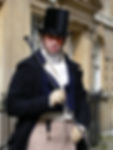
Is there a difference between a rake and a rogue? How is it that all macaroni are fops but not all fops are macaroni? Can you spot a dandy from a Corinthian? Let us have a little fun with some of the sets of gentlemen we come across in the Georgian era, some who feature prominently in hist roms, and others who perhaps should be featured but we don't see often. For the sake of stylistic convenience, I intend to capitalize each type, such as Rake instead of rake, but do know that aside from Corinthian, all types should be lowercased.
In addition to images inspired by certain sets, I'll also recommend Georgette Heyer novels that display the types of character to advantage, especially when the type doesn't necessarily have a visually identifiable fashion rather is a type noted by a gentleman's pastime or personality. Speaking of Heyer, know that while Heyer invented quite a few elements of this genre that are now canon, Heyer did not invent the terms or types we'll explore here, rather she took advantage of the types referenced in the Georgian era novels, plays, dictionaries, caricatures, newspapers, and beyond. She did, however, epitomize the stereotypes to perfection, and thus the recommended novels are too delightful to pass up in getting to know these "types" of gentlemen.
Important to note, while there are clearly identifiable types, there are, of course, those who possess a curious combination of traits, those who would deny being classified as any of these types, and still those who appear to possess a great many traits of a certain type yet would not be considered amongst that set because of age, attitude, personality, or behavior. There is a great deal to be said about one's friends, in addition to one's morals, virtues, and pastimes, such as a Corinthian who is so well dressed as to be considered a Dandy but who is humble enough and well mannered enough to be thought of as Nonpareil--so what is he? If his set of friends are all Corinthians, then despite his other traits, he likely considers himself as a sporting man, and so do others around him. Or what of the gentleman who minces when he walks, waves a scented handkerchief to avoid offending smells, and never leaves his house without sufficient lace, frippery, fan, or cosmetics--Macaroni, right? And yet he sneers at those in the Macaroni club, thinks them foolish, and is a good twenty years older than any Macaroni he knows. His behavior, his friends, his views, all of these factors would affect how people considered him, so while he may appear extremely Foppish, he may actually be seen by his peers as a Nonpareil. It's as much about a mindset as anything, about what they stand for, what they value, how they spend their time, their attitude, etc. as it is about the look, but there is something to be said about being able to spot most of these types out of a crowd without much difficulty.
All of these terms refer to types of gentlemen, not types of ladies (perhaps we'll cover those another time, such as an Incomparable or a Bluestocking, etc.), and more than not the terms reference fashion preferences, which is interesting to mull over as to how important one's style was at the time. Even types like the Corinthians could be spotted by their style, although the term itself references their pastime preferences and skills more than their preferred fashion.
Also worth noting is that many of these sets had frequent haunts (such as certain groups preferring White's, other groups preferring Boodle's, etc.) and others still formed private clubs (such as the Four-Horse Club), which further established their identity as one type or another. The terms we'll cover stretch across the Georgian era, so both 18th century and early 19th century. We'll go in alphabetical order. The good news is there are not that many terms, so this will be a brief and lively tour! I recommend investigating each individually to get to know more about them, as we'll only cover the basic image of each.
Buck

This term applies to two types of people, so context of usage would be needed for us to determine which type. Generally, this refers to a sporting type of gentleman, always up for a bit of fun, especially when it comes to curricle races, wagers, and horseflesh. Take that type to the extreme, and we have a "buck of the first head," which was the kind of reveler that did not stop at curricle races and wagers, rather went for any and all kinds of debauchery, the naughtier the evening plans, the better (but not to the point of criminal behavior). To enjoy this type in action, embodied by the hero, give Regency Buck by Georgette Heyer a read.
Beau
A reference to a gentleman's "presence" rather than his fashion or looks. This sort of gentleman seeks attention and finds it, even by doing as little as walking across a ballroom. He could be exceptionally good looking, but he need not be. With the right combination of confidence and carriage, he commands attention. A great post by Laura Boyle that talks about Bucks, Beaus, and Dandies can be found on the Jane Austen Centre's site. A variation of Beau would be a Gallant.
Corinthian

This gentleman is an athlete, plain and simple. It could be just one sport he favors, some, or all. Fencing, boxing, hunting, riding, shooting, dancing, anything that requires physical skill, he excels. Interestingly, this term usually implies a man of good character, as well, so don't think those young Bucks racing their horses are Corinthians just because they're good at racing, which would seem sporty and requiring of physical skill. Oh no. Corinthians would be sporty and moral. They also perfected their sport(s) and took their endeavors seriously, above all else. To exemplify this type, we have The Corinthian by Georgette Heyer.
Dandy
The Fops of the 18th century were replaced by the Dandies of the 19th century, both as vain about their appearance but with opposing fashions and personalities. Fops are known for their effeminacy (to varying degrees), while the Dandies are known for their masculinity. While being as fashion obsessed as the Fops, they are in direct opposition, turning extravagance into simple elegance and vanity into urbanity. The only sport a Dandy was interested in, aside from gaming, was fashion. Dandies were around well before "Beau" Brummell, first appearing in the late 18th century, but Brummell quickly became the trendsetter once he entered the scene. Dandies were the best dressed gentlemen of leisure who had nought to do with their time except look fabulous and drink in good company. Fashion was first and foremost. Even if they enjoyed riding like a Corinthian, they would never wish to dirty their boots or sweat through their shirt. Fashion was so important they could easily own twenty of the same linen cravat and go through all twenty in a single day, determined to look their best or not be seen at all.

They're best spotted in a crowd by their earthy tones, black/blue and white/tan attire, boots rather than shoes, beaver hat rather than cocked hat, trousers rather than breeches, and buckskin rather than silk/linen/velvet/satin. While their chosen fashion became the fashion everyone wore, they were not only the trendsetters, but more importantly they had an attitude that set them apart from a gentleman in the same attire who was not considered a Dandy. It's not just fashion, you see, but lifestyle and personality. The Dandy's attitude is one of nonchalance, the type to brush aside a compliment with, "Oh, this old thing?" They wanted to be seen as aloof and independent, unaffected by anything, be it politics, courtship, gossip, or otherwise. After hours dressing in front of the mirror, they were determined to be seen as "effortless," as though they rolled out of bed looking this fabulous. Did you know that Dandies were so set on perfection, they would line up around the block in hopes of having the chance to watch Beau Brummel dress for the day? He never dressed without a room packed with an audience, the Prince Regent being his top follower (and protégé). A variation of Dandy is the Swell. Rather than include an image of Beau Brummell as a representative of a Dandy (just scroll to the featured image at the beginning of this post for that!), I'd like to offer this treasure instead, for although this character/actor would not be considered a Dandy, the attire Johnny Flynn is wearing as Mr. Knightly in the newest Emma adaptation is simply perfect for Dandyism (at its best).
Speaking of Dandies and of Beau Brummell (who is often credited for the Dandy style, but that is not accurate, as the style began in the 1790s, a decade before Brummell even had his first season. He did, however, become the most influential dresser of his time once he made himself known), if you've not seen Beau Brummell: This Charming Man (2006), then you simply must, must, must. You can watch it free on YouTube with a bit of searching. Wink wink. Here is a clip to tempt you. This clip is a little different, and I think it serves as a fine example of Fop vs Dandy, as it has Brummell explaining the differences between the two (in cinematographic fashion), right down to posture, hygiene, and attitude. As a bonus, in that second clip, we see a preview of a Rake and how someone of that type would have been perceived (which will prove useful when we get to Rake in this exploration of terms). I will attempt to embed both clips for your viewing ease, but YouTube might block them, so the links are provided in case.
Now that we've mentioned Fops vs Dandies, enjoy this screen capture where Beau takes on a set of Fops and wins (poor Fops). The visual is pretty splendid, though, in showing the fashion war.
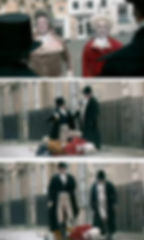
Exquisites
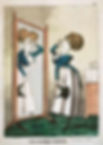
This is a term used often in Heyer novels, typically as a collective reference to young and fashionable off-screen characters, such as the hero walking into a ball, eyeing the room through his quizzing glass, and noting the members of the Macaroni Club in one corner, the young Exquisites in another, and, ah, there's the heroine to approach. Interestingly, the term is used both in the 18th century to reference a type of Fop/Macaroni and in the Regency to reference a type of Dandy. There is not much to distinguish an Exquisite from a Fop, a Dandy, or even a Macaroni aside from them being a poor imitation of each they try to emulate. The term is typically used mockingly, not in reference to someone being "fashionably dressed to the point of fabulousness" rather it is used with an edge of satire, as though a fool is trying to master the art of fashion but has failed. The Exquisites are so busy trying to be fashionable, they have missed the mark and thus will never be fashionable. The provided caricature of an Exquisite comes from a brief but great post on Jane Austen's World: "The Distinctions of the Regency Dandy."
Fops
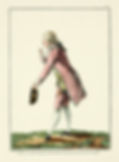
The Fops were primarily of the 18th century, but there was certainly overlap in the early 19th century as some held to the old fashions. Don't confuse Foppish fashion with what was popular at the time since a Fop standing next to any other gentleman of the era might not look too different to the modern eye. As with Dandies, being a Fop was about the attitude, mannerisms, and lifestyle that went with the fashion. Fops are as vain and fashion obsessed as Dandies, except not only are they 18th century, they are also the opposite in fashion styling. Fops prefer satins and silks, velvets, lace and frills, powdered hair or wigs, beauty patches, embroidery and embellishments, bold colors, and jewelry. They dress to be noticed and do their best to be noticed by being the loudest, most talkative, most flamboyant person in the room. Doused in perfume and dressed in vibrant colors, they are difficult to miss in a crowd. Their "look" is not, at first glance, all that different than any other well-dressed gentleman of the 18th century, but it is the attitude and vanity that goes with it that ultimately distinguishes them, although many Fops take fashions of the time to the extreme. Now, there is a keen difference between a Fop and a Macaroni.

While a Macaroni is a Fop, it is specific type of Fop, and not all Fops were Macaroni, so the look overlaps in ways, but the styles, behaviors, and personalities are vastly different. Hold that thought until we cover the Macaroni. Generally speaking, Fops are fashion obsessed attention seekers. Easily spotted in a crowd. Variations of Fops include coxcombes (especially foolish and conceited Fops), fribbles (effeminate Fops), and poppinjays (preening Fops). I think to fully capture the attitude that comes with the Fop, the image of Hugh Laurie as Prince George in Blackadder is not to be missed. A quick note about the Prince of Wales. Before Beau Brummell worked his influence, the prince was as Foppish as they come, but after Brummell, he was a dedicated Dandy. Enjoy this comparison screen capture from This Charming Man, as posted on Jane Austen's World.

Macaroni

The Macaroni is a specific subset of the Fop. As with Fops, in general, Macaroni are easily spotted with their satin, silks, and velvet, lace, lace, and more lace, powdered wigs, beauty patches, embroidery and embellishments, bold colors, and jewelry. Also as with Fops, they adore attention and go out of their way to receive it. What differentiates the Macaroni from the Fop is mostly behavior, although it does go a little further than that. Macaroni refers specifically to those young gentlemen newly returned from their Grand Tour who emulate, to excess, the Italian and French fashions and mannerisms popular at the time, putting on airs and arrogance to suggest they are superior. Notable traits that distinguish and define the Macaroni are effeminate mannerisms and outrageous attire, far and above the boldness of the average Fop. The attire typically included every possible accessory at the same time, such as a muff, a sword, a quizzing glass, a fan, a cane, a snuffbox, a handkerchief, an enormous wig topped with a hat, and more, all at the same time. They speak with a fake lisp, walk mincingly, wear the highest of heels, rouge cheeks and lips heavily, wave scented handkerchiefs, adorn their face with at least three patches when one would have been the fashionable choice for a gentleman at the time, and wear scented flowers. While Macaroni and Fop are often used interchangeably, there is a keen difference between the two. A great read on the history of the Macaroni is from Pen and Pension: "Of Popinjays, Fops, and Macaronis." For a great visual of a Macaroni, enjoy this Pinterest board, which shows a wonderful variety of Macaroni fashions and attitudes with plenty of Georgian era caricatures and fashion prints.
Nonpareils

A Nonpareil is also referred to as a "Nonesuch," he was truly incomparable. This gentleman is in a class of his own, no one his equal. So powerful in presence, rank, and wealth, he sets the tone of the room, is the most sought-after, sets the fashion, and is admired for...everything. Whatever the pursuit, he has somehow mastered it, be it fencing, gaming, or omniscience. If you cannot name at least three such characters in the genre, think harder! Entire series have been written with this Nonesuch-like-him being the sort of leading man of the series, the go-to character in each book to solve all the problems. Typically, but not always, he appears as a man of few words, perhaps even formidable, but of cunning wit and a sharp tongue. A single tone of his will silence a room, and a raise of his quizzing glass or eyebrow can strike down the worst villain. Impeccable manners, of course, but often reserved. For this type, I don't have an image to share since this gentleman could enjoy whatever fashion he wanted. The Nonesuch by Georgette Heyer is not to be missed.
Pinks, Tulips, and Gillyflowers
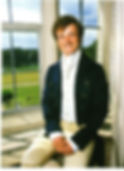
These terms, each with their own specific reference, are lesser versions of a curious combination of Corinthianism meets Dandyism. The terms are more often used derisively for those types who pose as a Corinthian while dressing like a Dandy, such as knowing how to box, or at least claiming they know how to box, but never actually boxing, or those who know how to drive well, or claim they know how to drive well, but never actually drive. They could be considered Corinthians in training, so to speak, but fastidious about their dress, typically adorned in something specific, like preferring a silk neckerchief instead of linen, preferring certain colors, etc. While each of these terms is more specific, such as a Tulip being different from a Gillyflower, we'll lump them into the same description since they're variations of the same type of almost but not quite persona. For a more positive view of these types, they're often described as "fine fellows," the happily-go-lucky type, always the friend but rarely the lover, prone to wearing their emotions on their sleeve (no ennui here!), but not vain or arrogant as we find with Dandies and Fops. They're not even obsessed with fashion so much as they're simply always well turned out, always looking their best. Mr. Bingley from Pride & Prejudice has been put into this category by a few folks, and I can't say I disagree.
Rake

These fellows are beloved in the hist rom genre, but they are rarely depicted accurately. We typically see Rakes in the genre as being the handsome womanizer who is experienced in addition to being reckless. Willoughby in Sense and Sensibility might at first seem like a Rake, as might Crawford in Mansfield Park, and I think to some extent these are the "Rakes" we see depicted in hist roms. Alas, these gentlemen would not fit the definition or reputation of Georgian Rake. Rakes were seen as depraved and were not respectable. They were not respectable enough to be invited to the parties our heroes and heroines would attend and would ruin any person's reputation by merely stepping foot into that person's house. No one would invite them into their homes for any reason. Have you ever read the 1782 novel Les Liaisons Dangereuses? Valmont epitomizes the Georgian Rake. (No, I've not seen the film adaptations to know if they are in any way true to the novel.). Georgian Rakes were not womanizers who frequented brothels or kept mistresses. Oh no. Rakes were the predators, the ravishers, and by today's standards, even pedophiles. Pick the youngest lady in the ballroom, and the Rake would be stalking her into a private corner to have his kicks and leave, all the more fun if she were unwilling. Morals, laws, conventions, none of these factored for a Rake. Their pastimes and behavior could only be described as dissolute. There were varying degrees of extremes, of course, but once considered a Rake, there was no redemption. Rakes lived for pleasure and debauchery. Generally speaking, Rakes lived their lifestyle in the open, but there were some who conducted their business in private to avoid the destruction of their reputation.
A notable group of Rakes is the set that pledged membership to the Hellfire Club. No, I'm not referring to the D&D group from Stranger Things. The Georgian era Hellfire Club consisted mostly of aristocratic young Rakes who met to engage in orgies, Fight Club-style violence, Satanic rituals, and yes, even one documented murder. Before you panic, know that not all appearances of this club through the century were so extreme. This is a case when its reputation preceded action. There were several iterations of Hellfire Club, with the beginnings in the early 18th century being little more than a group of aristocrats and their friends wanting to engage in private philosophical discussion. I've bolded that for emphasis. Naturally, at the time, any word of their activities would have been considered sinful and Satanic--although they were anything but--by their audacity to question the church and its doings in their philosophical discussions. The original club received a bad reputation despite its innocence, but it is that reputation that fueled later iterations to live up to the standards set by society. Later iterations of the club were downright hedonistic and dangerous, thus giving all iterations the same reputation, even those which formed in other countries. An interesting place to start might be to read this article by Ciaran Conliffe "The Hellfire Clubs--Decadence with a Whiff of Brimstone" and this article by Abarta Heritage "The Hellfire Club: Dublin's Hellfire Club 'a brace of monsters, blasphemers, and bacchanalians'."
Rogue

Rogue and Rake are not interchangeable terms, although a Rogue can be a Rake, and a Rake can be a Rogue, but the terms depict different behaviors. Rake refers specifically to sexual activities, nothing else. A Rake is a libertine. The term Rogue, however, refers to immoral behavior that borders on or even is illegal. A Rogue is a scoundrel and might be dangerous. A highwayman is a Rogue, for example. It is not a far stretch to assume that a man lacking in morals could be both a Rake and Rogue since their immorality would affect all aspects of their life, but that was not always the case. A thief, for instance, may be committing crimes out of necessity (not saying that excuses his behavior; this is just an example), such as poaching to feed his family, and have zero interest in seducing or ravishing. Likewise, a libertine may have an insatiable appetite for pleasure, but otherwise never have committed a crime. Just how rogueish is a particular Rogue is in the eye the eye of the beholder, for a smuggler would certainly be considered a Rogue, but were all smugglers necessarily bad, such as a gentleman who smuggled tea to avoid excessive tea taxes? Hmm. Things to ponder.
A quick little note on Rakes and Rogues. Their usage in hist roms at this point is canon, even if that differs from the original use of the terms. In some ways, this is a pity, as we have lightened the usage to turn criminal activity into something playful and flirtatious. In other ways, it is both fascinating to see the evolution of language and relieving to see something so negative transformed into something more acceptable (in terms of word usage, not behavior, of course). Gone are the ravishing rakes, replaced by the redeemable lovers. Gone are the plundering rogues, replaced by the scruffy-looking nerf herders. Sometimes change is better than accuracy, right?
Concluding Thoughts
The stereotypes we see here, as well as others that have not been included, would have been familiar at the merest suggestion within the Georgian era. We do see the terms in some writing of the time, but it was more common to see hints or descriptions that were just enough to clue the contemporary reader of the time as to what "type" of fellow was being described. It's not so different now, eh? Would one need to use the term "hipster" in a modern story? It could be more impactful to offer key descriptions so that those who are familiar with the stereotype will have a clear visual while others have enough to get the general idea.
As a reader of hist roms, can you think of character examples for each of these types? Which types do you like best or would like to see more of in novels?
Enjoyed this research post? Consider fueling my research endeavors with a fresh brew:
